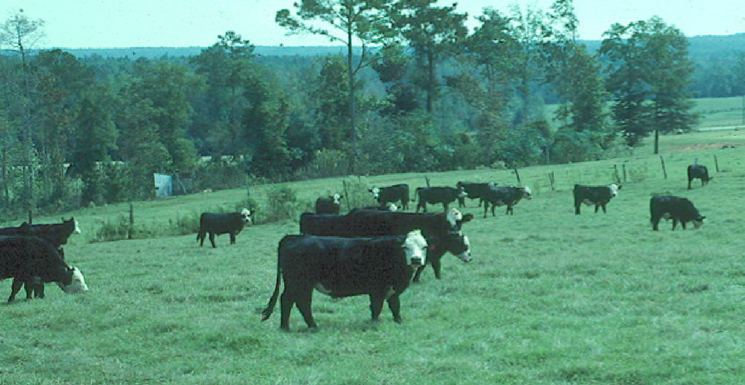
Fields selected for overseeding should not be excessively wet or subject to flooding. A soil test should be taken from each field, and any needed lime should be applied several months before planting. Most winter annuals are best suited to a soil pH of 6.0 to 6.5. Any legume seed planted should be inoculated with the appropriate Rhizobium bacteria.
Annual ryegrass is by far the forage crop most frequently used in overseeding, and there are many varieties. They differ with regard to forage yield, distribution of growth, disease resistance, and/or winter hardiness. Many universities conduct ryegrass variety trials, so it makes sense to review local trial data before making variety decisions.
Not getting the summer grass grazed or mowed closely enough is probably the most common reason for overseeding failures. With ryegrass and clovers, a stubble height of no more than one-inch is preferable. Large-seeded species such as vetch or small grain are more tolerant of taller plant residue.
Planting Details
In the lower South, most overseeding is done in October, November, or early December (check local university recommendations) when night temperatures are usually in the lower 60’s and daytime temperatures are around 80 degrees. Recommended planting dates in areas near the Gulf Coast are typically later than in areas farther north.
Just about any combination of winter annuals can be overseeded, but in most cases annual ryegrass is a desirable component. Usual recommended seeding rates and depths for selected winter annual forages are presented in the accompanying table. Seed germination of most winter annuals normally occurs in about seven days.
Small grain seed (such as cereal rye, wheat, oats, or triticale) should be covered with soil, so it is best to use a drill planter. Annual ryegrass and clover seed can likewise be planted with a drill, but can also germinate and become established from seed on top of the ground if they are in firm contact with the soil and adequate moisture is present. If conditions are not ideal, use of a drag harrow or even light disking (1 to 2 inches deep) may be helpful. Seed need to be in firm contact with soil and not surface residue. In areas where a significant amount of soil has been exposed by tillage, it is advisable to use a cultipacker or some sort of drag after broadcasting seed.
Usual Seeding Rates And Depths For Annual Ryegrass Alone Or In Mixtures*
| Forage Crop(s) | Alone | In Mixture | Seeding Depth (in.) |
| Annual Ryegrass | 20-30 | 15-20 | 0-1/2 |
| Rye, Wheat, or Oat | 60-90 | 1-2 | |
| Arrowleaf Clover | 5-8 | 0-1/2 | |
| Ball Clover | 1-2 | 0-1/4 | |
| Crimson Clover | 15-20 | 0-1/2 |
*These are usual seeding rates for drill plantings. The seeding rate for broadcast plantings should be increased by around 25%.
FERTILIZATION
Phosphorus and potassium should be applied at or near planting time according to soil test recommendations. When a small grain/ryegrass mixtures is overseeded, 30 to 60 pounds of nitrogen per acre should be applied at or near planting time. When annual ryegrass alone is overseeded there is usually enough nitrogen in the system to get the ryegrass through the winter. Application of 50 to 60 pounds of nitrogen per acre to ryegrass in late January or early February usually works well. One or two additional applications of 50 to 60 pounds per acre are typically made during the growing season.
For a legume-ryegrass mixture, 30 to 60 pounds of nitrogen per acre should normally be applied in late January or early February. If the legume comprises 25 to 30 percent or more of the ground cover in spring, no additional nitrogen is required.
GRAZING MANAGEMENT
Winter annuals should not be grazed until they are at least 6 to 8 inches high and should not be grazed closer than 3 to 4 inches. In spring, a thick ryegrass stand can damage or thin the stand of a summer grass. Consequently, overseeding no more than about one-third of the warm season pastures on a farm should allow use of the pasture forage and avoid undergrazing.
__________________
Foraging Ahead is a column presented by Ragan & Massey and written by Dr. Don Ball, Professor Emeritus at Auburn University. Dr. Ball is one of the authors of the popular book “Southern Forages” available here.
